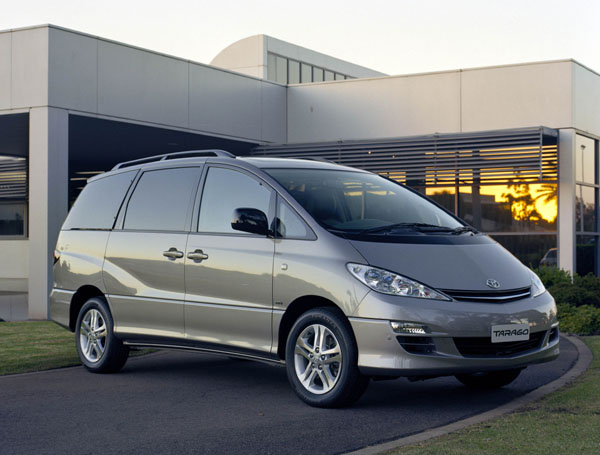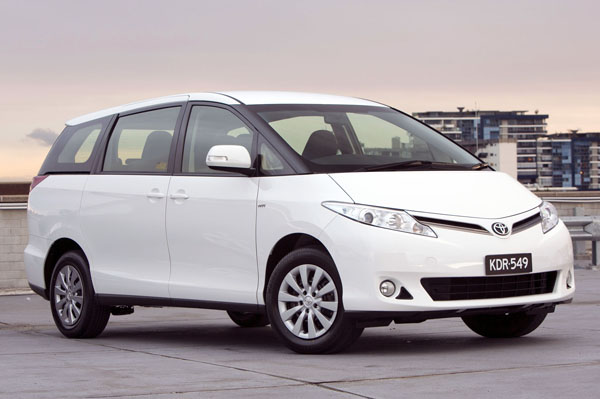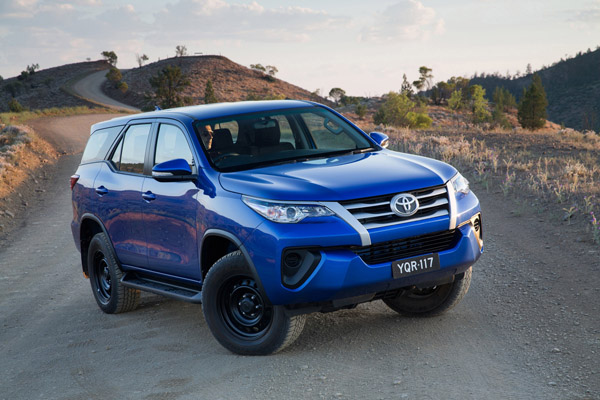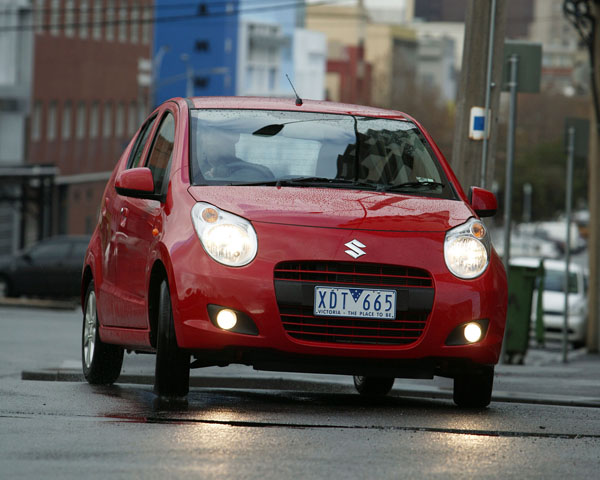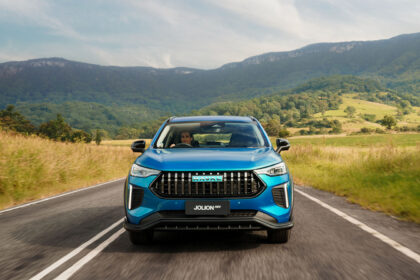Toyota Tarago has been sold in Australia in large numbers since the early 1980s and was one of the earliest examples of what later became known as people movers.
However the first Taragos were nothing more than delivery vans with extra seats, side windows and a bit of added trim. Toyota decided to make a complete change in direction and from 1990 Tarago was a pure people mover with all that means in the way of added comfort and safety features.
Though so-called ‘Egg-shaped’ 1990s Taragos are getting on in years they are tough creatures and with proper maintenance and driving many are still going strong. However, unless you’re an expert, make sure to get a professional inspection as major repairs can ruin your budget.
A weak point of the 1990 to 1999 Tarago is that all rear occupants have to get in and out of a single side door. The all-new Tarago of May 2000 had passenger doors on both sides, as has every model since. A new design was launched in March 2006 and continues to this day with upgrades in February 2009 and July 2012 to keep it up to date.
Tarago is spacious, with a virtually flat floor throughout. Seating is provided for seven or eight, depending on whether the centre row has twin individual seats or a three-place bench. Boot space is reasonable even with all the seats being used – and very large if the rear seats are folded.
Comfort is generally good, though rough roads may cause the ride to deteriorate. Handling is good, for a people mover, and it’s safe in the way it understeers to push itself back into line if the driver makes a mistake.
Tarago has good resale value so you will pay top dollar for a good one. Hopefully, the extra price when you buy is is still there with it’s time to trade it in. Having it serviced by a Toyota dealer will aid resale price.
Performance from the four-cylinder, 2.4-litre engine is likely adequate for most drivers, though the Tarago will struggle on hills if it’s carrying a big load. Have family and/or friends come along for your test drive to add a bit of weight to the equation.
A powerful 3.5-litre V6 engine option for the upmarket Taragos was introduced in 2007. The V6 engine comes with a six-speed automatic and naturally has far more performance so makes a great country tourer with the family on board.
Toyota offers the option of a five-speed manual gearbox or a four-speed automatic transmission on the four-cylinder versions, with the auto being by far the more popular. The facelifted 2012 model year saw the introduction of an efficient CVT automatic.
Most 1990 to 2000 Taragos have rear-wheel drive, but some had the option of extra grip by way of four-wheel drive. These latter weren’t aimed at off-road users, but at providing greater safety on icy and/or unmade roads. As they are heavier they lose some performance and have higher fuel consumption. Not many were sold.
From 2000 onwards front-wheel-drive was used to improve space efficiency.
Quite a few grey imports have been brought downunder. Look for names Previa or Estima on the badges as the Tarago name was exclusive to Australia. Then again, the badges may have been updated to Tarago…
Toyota’s spare parts network is one of the largest in Australia and has operated efficiently for decades. Because of Toyota’s strength in country areas, even in the far-distant bush, availability is excellent. If you do have troubles there are likely to be mechanics with plenty of experience, official or unofficial, on Toyotas.
Parts prices are about average for this type of vehicle. Some body parts on the 1990 to 2000 Tarago can be pretty expensive due to their size and complexity.
The ‘Egg’ Toyota Taragos are getting on in years so getting parts is starting to become a problem. Specialist recyclers are a handy source of parts for older models.
Toyota Taragos have been a longtime favourite as hotel shuttle buses, airport transfer vehicles and taxis. These may have done some hard work, though to compensate for this they are usually serviced by the book, so ask to see the service records.
Insurance on the Tarago can be slightly more expensive than average but not outrageously so. Shop around for the best deal, but be sure to understand exactly what you are getting for your money.
You may also care to look at the Toyota Spacia, a smaller people mover with quite a few similarities to the Tarago. Unlike the Tarago the Spacia was seldom used commercially.
WHAT TO LOOK FOR
Check the condition of the seats, carpet and trim carefully for signs of heavy-duty usage as it may have been a shuttle bus in its early years.
The engine should start easily. Ideally get to it when it’s stone cold in the morning.
A puff of smoke from the exhaust when a cold engine first kicks over may indicate wear.
Wear may also show up as smoke from the exhaust when the engine is accelerated hard after it’s been idling for a while.
The gearbox or automatic transmission should be precise and smooth in operation, with no crunching from a manual gearbox on fast downchanges.
We have come across more than one Tarago 4WD that has obviously spent time at the beach. Hmm…
Look for rust in the lower areas of the body and in the floor of the cabin and luggage area, though it’s certainly not a common occurrence. Vehicles badly repaired after a crash may suffer from rust.
HOW MUCH?
Expect to pay from $2000 to $4000 for a pre-2000 Toyota Tarago; $5000 to $9000 for a 2000 GLi; $8000 to $12,000 for a 203 GLX; $11,000 to $16,000 for a 2005 Ultima; $16,000 to $22,000 for a 2007 Ultima; $19,000 to $27,000 for a 2011 GLi; $24,000 to $32,000 for a 2012 GLX; $31,000 to $42,000 for a 2012 Ultima; $33,000 to $44,000 for a 2014 GLX; and $40,000 to $53,000 for a 2015 Ultima.
CAR BUYING TIP
Before taking a vehicle for a test drive look it over very carefully. That will give you some clues as to what to look, listen and feel for during your drive.





